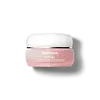What's inside
What's inside
 Key Ingredients
Key Ingredients

 Benefits
Benefits

 Concerns
Concerns

No concerns
 Ingredients Side-by-side
Ingredients Side-by-side

Water
Skin ConditioningButylene Glycol
HumectantIsopropyl Isostearate
EmollientGlycerin
HumectantTriolein
Skin ConditioningSodium Polyacryloyldimethyl Taurate
Emulsion StabilisingSucrose
HumectantTapioca Starch
Acetyl Glucosamine
Skin ConditioningLactobacillus Ferment
Skin ConditioningTrametes Versicolor Extract
Algae Extract
EmollientChamomilla Recutita Flower Extract
MaskingHelianthus Annuus Seed Oil
EmollientHydrolyzed Rice Extract
Skin ConditioningCentaurium Erythraea Extract
Skin ConditioningAscophyllum Nodosum Extract
Skin ConditioningAlteromonas Ferment Extract
Skin ConditioningRosmarinus Officinalis Leaf Extract
AntimicrobialPaeonia Suffruticosa Root Extract
Skin ProtectingCistus Incanus Flower/Leaf/Stem Extract
Skin ConditioningArtemia Extract
Skin ConditioningAsparagopsis Armata Extract
Skin ProtectingCrataegus Monogyna Flower Extract
Skin ConditioningGlucose
HumectantTrehalose
HumectantCaffeine
Skin ConditioningPanthenol
Skin ConditioningCoco-Caprylate/Caprate
EmollientSorbitol
HumectantDipotassium Glycyrrhizate
HumectantTriheptanoin
Skin ConditioningSodium Hyaluronate
HumectantTocopheryl Acetate
AntioxidantCaprylyl Glycol
EmollientGlyceryl Dioleate
EmollientSodium PCA
HumectantPolyglyceryl-6 Caprylate
EmulsifyingPolyglyceryl-4 Caprate
EmulsifyingAcrylates/C10-30 Alkyl Acrylate Crosspolymer
Emulsion StabilisingSodium Hydroxide
BufferingDisodium EDTA
Hexylene Glycol
EmulsifyingC9-12 Alkane
SolventDilinoleic Acid/Butanediol Copolymer
Citric Acid
BufferingTriacetin
AntimicrobialUrea
BufferingHydroxyethyl Urea
HumectantCastor Oil/Ipdi Copolymer
Polyquaternium-51
Skin ConditioningBHT
AntioxidantPhenoxyethanol
PreservativePotassium Sorbate
PreservativeChlorphenesin
AntimicrobialSorbic Acid
PreservativeSodium Benzoate
MaskingWater, Butylene Glycol, Isopropyl Isostearate, Glycerin, Triolein, Sodium Polyacryloyldimethyl Taurate, Sucrose, Tapioca Starch, Acetyl Glucosamine, Lactobacillus Ferment, Trametes Versicolor Extract, Algae Extract, Chamomilla Recutita Flower Extract, Helianthus Annuus Seed Oil, Hydrolyzed Rice Extract, Centaurium Erythraea Extract, Ascophyllum Nodosum Extract, Alteromonas Ferment Extract, Rosmarinus Officinalis Leaf Extract, Paeonia Suffruticosa Root Extract, Cistus Incanus Flower/Leaf/Stem Extract, Artemia Extract, Asparagopsis Armata Extract, Crataegus Monogyna Flower Extract, Glucose, Trehalose, Caffeine, Panthenol, Coco-Caprylate/Caprate, Sorbitol, Dipotassium Glycyrrhizate, Triheptanoin, Sodium Hyaluronate, Tocopheryl Acetate, Caprylyl Glycol, Glyceryl Dioleate, Sodium PCA, Polyglyceryl-6 Caprylate, Polyglyceryl-4 Caprate, Acrylates/C10-30 Alkyl Acrylate Crosspolymer, Sodium Hydroxide, Disodium EDTA, Hexylene Glycol, C9-12 Alkane, Dilinoleic Acid/Butanediol Copolymer, Citric Acid, Triacetin, Urea, Hydroxyethyl Urea, Castor Oil/Ipdi Copolymer, Polyquaternium-51, BHT, Phenoxyethanol, Potassium Sorbate, Chlorphenesin, Sorbic Acid, Sodium Benzoate
Water
Skin ConditioningHelianthus Annuus Seed Oil
EmollientGlycerin
HumectantSqualane
EmollientPolyglyceryl-6 Distearate
EmulsifyingMicrocrystalline Cellulose
AbsorbentDicaprylyl Ether
Emollient1,2-Hexanediol
Skin ConditioningJojoba Esters
EmollientAcrylates/C10-30 Alkyl Acrylate Crosspolymer
Emulsion StabilisingHydroxyacetophenone
AntioxidantPotassium Cetyl Phosphate
EmulsifyingSodium Hydroxide
BufferingCetyl Alcohol
EmollientPolyglyceryl-3 Beeswax
EmulsifyingXanthan Gum
EmulsifyingTocopheryl Acetate
AntioxidantHydrolyzed Algin
Tocopherol
AntioxidantWater, Helianthus Annuus Seed Oil, Glycerin, Squalane, Polyglyceryl-6 Distearate, Microcrystalline Cellulose, Dicaprylyl Ether, 1,2-Hexanediol, Jojoba Esters, Acrylates/C10-30 Alkyl Acrylate Crosspolymer, Hydroxyacetophenone, Potassium Cetyl Phosphate, Sodium Hydroxide, Cetyl Alcohol, Polyglyceryl-3 Beeswax, Xanthan Gum, Tocopheryl Acetate, Hydrolyzed Algin, Tocopherol
 Reviews
Reviews

Ingredients Explained
These ingredients are found in both products.
Ingredients higher up in an ingredient list are typically present in a larger amount.
Acrylates/C10-30 Alkyl Acrylate Crosspolymer is a synthetic polymer. It is used to thicken and improve the texture of products. Due to its properties, it can prevent water and oil ingredients from separating.
Glycerin is already naturally found in your skin. It helps moisturize and protect your skin.
A study from 2016 found glycerin to be more effective as a humectant than AHAs and hyaluronic acid.
As a humectant, it helps the skin stay hydrated by pulling moisture to your skin. The low molecular weight of glycerin allows it to pull moisture into the deeper layers of your skin.
Hydrated skin improves your skin barrier; Your skin barrier helps protect against irritants and bacteria.
Glycerin has also been found to have antimicrobial and antiviral properties. Due to these properties, glycerin is often used in wound and burn treatments.
In cosmetics, glycerin is usually derived from plants such as soybean or palm. However, it can also be sourced from animals, such as tallow or animal fat.
This ingredient is organic, colorless, odorless, and non-toxic.
Glycerin is the name for this ingredient in American English. British English uses Glycerol/Glycerine.
Learn more about GlycerinHelianthus Annuus Seed Oil is the oil derived from the seeds of a Sunflower. Sunflower seed oil is non-fragrant. It is an emollient, meaning it helps to soften the skin.
Sunflower seed oil contains many fatty acids. The fatty acids found in sunflower seeds include (from highest amount to least): linoleic acid, myristic acid, palmitic acid, stearic acid, arachidic acid, oleic acid, and linolenic acid.
These fatty acids help the skin create ceramides. Ceramides play a role in repairing the skin barrier.
Helianthus Annuus Seed Oil helps moisturize the skin. This in turn helps the skin look more rejuvenated and smoother.
Sunflowers are rich in vitamin E.
Historians believe Indigenous cultures of North America domesticated sunflowers before corn. Thus they relied on sunflower oil for a variety of uses. One such use is moisturizing skin and hair.
Sunflower seed oil may not be fungal acne safe. We recommend speaking with a professional if you have any concerns.
Learn more about Helianthus Annuus Seed OilSodium Hydroxide is also known as lye or caustic soda. It is used to adjust the pH of products; many ingredients require a specific pH to be effective.
In small amounts, sodium hydroxide is considered safe to use. However, large amounts may cause chemical burns due to its high alkaline.
Your skin has a natural pH and acid mantle. This acid mantle helps prevent harmful bacteria from breaking through. The acid mantle also helps keep your skin hydrated.
"Alkaline" refers to a high pH level. A low pH level would be considered acidic.
Learn more about Sodium HydroxideTocopheryl Acetate is AKA Vitamin E. It is an antioxidant and protects your skin from free radicals. Free radicals damage the skin by breaking down collagen.
One study found using Tocopheryl Acetate with Vitamin C decreased the number of sunburned cells.
Tocopheryl Acetate is commonly found in both skincare and dietary supplements.
Learn more about Tocopheryl AcetateWater. It's the most common cosmetic ingredient of all. You'll usually see it at the top of ingredient lists, meaning that it makes up the largest part of the product.
So why is it so popular? Water most often acts as a solvent - this means that it helps dissolve other ingredients into the formulation.
You'll also recognize water as that liquid we all need to stay alive. If you see this, drink a glass of water. Stay hydrated!
Learn more about Water